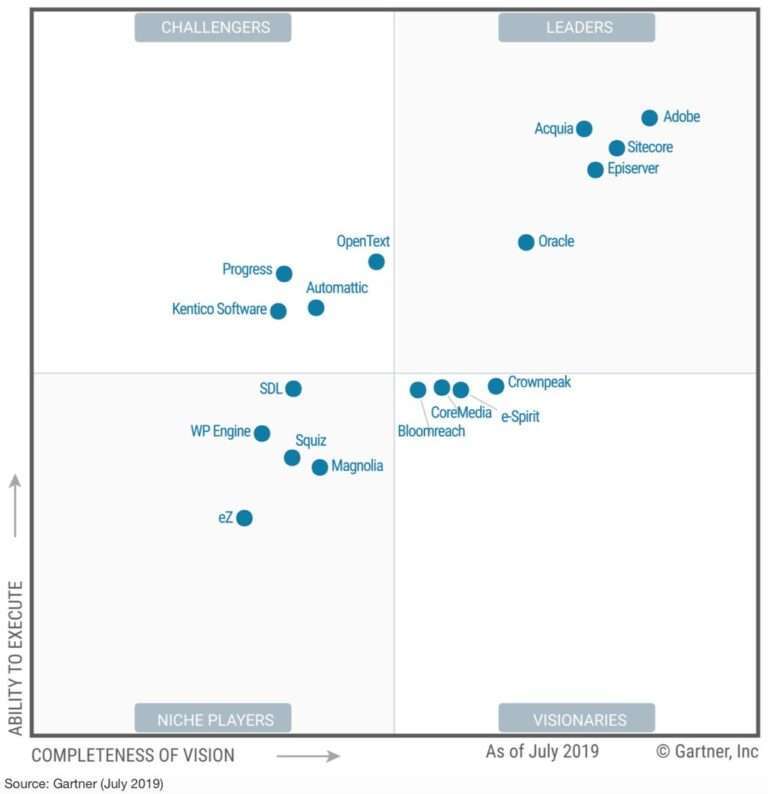What is Social Listening?
Overview
What is Social Listening?
Social listening is the process of monitoring and analyzing online conversations and discussions happening on social media platforms. It involves tracking brand mentions, keywords, and hashtags to gain insights into consumer opinions, preferences, and trends. By leveraging social listening tools, businesses can gather valuable data and identify opportunities to engage with their target audience. This helps in understanding customer sentiment, identifying emerging topics, and staying updated with industry trends. Social listening plays a crucial role in content creation as it provides valuable information that can be used to create relevant and impactful content.
Why is Social Listening Important for Content Creation?
Social listening is crucial for content creation as it provides valuable insights into the needs, preferences, and opinions of your target audience. By monitoring social media conversations, you can identify emerging trends and topics that resonate with your audience. This knowledge allows you to create relevant and engaging content that meets their interests and expectations. Additionally, social listening helps you understand the sentiment surrounding your brand and industry, enabling you to address any concerns or capitalize on positive feedback. By harnessing social listening, you can ensure that your content strategy aligns with the ever-changing demands of your audience, resulting in more impactful and successful content.
Benefits of Harnessing Social Listening for Content Creation
Social listening provides several benefits for content creation. Firstly, it allows brands to gain insights into what their audience is talking about and what topics are trending. This helps in identifying popular and relevant topics to create content on. Secondly, social listening helps in understanding the sentiment and perception of the audience towards the brand, which can be valuable in shaping the content strategy. Thirdly, it enables brands to monitor and analyze competitor activities and industry trends, allowing them to stay updated and create content that stands out. Overall, harnessing social listening for content creation enhances engagement, relevance, and effectiveness of the content produced.
Understanding Your Target Audience
Identifying Relevant Social Media Platforms
When it comes to identifying relevant social media platforms, it is crucial to consider where your target audience spends their time online. Conduct market research to determine which platforms are most popular among your audience and align with your content goals. Additionally, analyze demographic data to understand the age, gender, and location of your audience, as this can influence platform preference. It is also important to consider the nature of your content and which platforms are best suited for its format, such as images, videos, or text-based posts. By identifying the most relevant social media platforms, you can effectively reach and engage your target audience.
Analyzing Audience Demographics and Behavior
Analyzing audience demographics and behavior is crucial for effective content creation. By understanding who your target audience is and how they behave on social media, you can tailor your content to their preferences and interests. Demographic data such as age, gender, location, and interests can help you create content that resonates with your audience. Additionally, analyzing audience behavior, such as their engagement with certain types of content or their purchasing habits, can provide valuable insights for content creation strategies. By leveraging social listening tools, you can gather and analyze this data to create targeted and engaging content that drives results.
Gaining Insights from Social Media Conversations
One of the key benefits of social listening is the ability to gain valuable insights from social media conversations. By monitoring and analyzing the discussions and interactions happening on various social media platforms, businesses can identify emerging trends, understand customer needs and preferences, and uncover valuable consumer insights. This information can then be used to inform content creation strategies, ensuring that the content produced resonates with the target audience and addresses their interests and concerns. Additionally, social listening allows businesses to identify potential issues or concerns that customers may have, providing an opportunity to address them proactively and improve customer satisfaction.
Leveraging Social Listening Tools
Choosing the Right Social Listening Tools
When it comes to choosing the right social listening tools, it is important to consider your specific needs and goals. There are various tools available in the market that offer different features and functionalities. Some key factors to consider include the ability to monitor multiple social media platforms, real-time data analysis, sentiment analysis, and competitor tracking. Additionally, it is essential to choose a tool that provides user-friendly interfaces and customizable reports. By selecting the right social listening tool, you can effectively track and analyze social media conversations, gain valuable insights, and make data-driven decisions to enhance your content creation strategy.
Monitoring Brand Mentions and Sentiment
Monitoring brand mentions and sentiment is a crucial aspect of social listening. By keeping track of how your brand is being talked about on social media, you can gain valuable insights into the perception and reputation of your brand. Positive mentions can help you identify what is working well and replicate it, while negative mentions can alert you to potential issues that need to be addressed. Additionally, monitoring sentiment can give you an overall understanding of how people feel about your brand, allowing you to make informed decisions about your content strategy. Utilizing social listening tools, you can create tables and lists to organize and analyze the data gathered from brand mentions and sentiment analysis.
Tracking Competitor Activities and Industry Trends
To stay ahead in the competitive landscape, it is crucial to track competitor activities and stay updated with the latest industry trends. Social listening tools provide valuable insights into what your competitors are doing, allowing you to identify their strengths and weaknesses. By monitoring their social media presence, content strategies, and customer interactions, you can gain a deeper understanding of their tactics and make informed decisions for your own content creation. Additionally, social listening helps you stay informed about the latest industry trends, enabling you to create content that is relevant and timely. By analyzing conversations and discussions happening across social media platforms, you can identify emerging topics and incorporate them into your content strategy. This ensures that your content remains fresh, engaging, and aligned with the interests of your target audience.
Creating Engaging Content with Social Listening
Identifying Popular Topics and Trends
Identifying popular topics and trends is crucial for creating engaging content that resonates with your target audience. By leveraging social listening tools, you can monitor conversations and analyze data to uncover the most talked-about subjects and emerging trends. This information can guide your content creation strategy, allowing you to produce relevant and timely content that captures the interest of your audience. Additionally, identifying popular topics and trends enables you to stay ahead of the competition and position your brand as a thought leader in your industry. Table 1 below provides an example of popular topics and trends identified through social listening.
| Popular Topics | Emerging Trends |
|---|---|
| Social media marketing | Influencer collaborations |
| Sustainability | Voice search optimization |
| Remote work | Augmented reality experiences |
By keeping a pulse on what’s popular and trending, you can ensure that your content remains fresh, engaging, and aligned with the interests of your audience.
Tailoring Content to Audience Preferences
To create engaging content that resonates with your target audience, it is crucial to tailor it to their preferences. Social listening allows you to gain insights into what your audience is interested in, what topics they are talking about, and what kind of content they engage with the most. By analyzing the conversations and trends on social media platforms, you can identify the popular topics that are relevant to your audience. This information can help you shape your content strategy and create content that is aligned with their interests. Additionally, social listening enables you to understand the preferred formats, tones, and styles of content that your audience prefers, allowing you to deliver a more personalized and engaging experience. By adapting your content to audience preferences, you can increase engagement, build stronger relationships, and drive better results.
Using Customer Feedback to Improve Content
One of the most valuable sources of insights for improving content is customer feedback. By listening to what your customers are saying about your brand and content on social media, you can gain valuable insights into their preferences, pain points, and suggestions for improvement. Analyzing customer feedback can help you identify areas where your content may be falling short and make necessary adjustments. Additionally, it allows you to understand what type of content resonates with your audience and what topics are of interest to them. By incorporating customer feedback into your content creation process, you can ensure that your content is relevant, engaging, and meets the needs of your target audience.
Conclusion
The Power of Social Listening in Content Creation
Social listening plays a crucial role in content creation by providing valuable insights into the interests, preferences, and needs of the target audience. By monitoring social media conversations and analyzing audience demographics and behavior, content creators can identify popular topics and trends that resonate with their audience. This allows them to tailor their content to audience preferences, resulting in more engaging and relevant content. Additionally, social listening enables content creators to gather customer feedback and incorporate it into their content strategy, ensuring continuous improvement. The power of social listening lies in its ability to inform and guide content creation, ultimately driving better engagement, increased reach, and ultimately, business success.
Key Takeaways
In conclusion, social listening is a powerful tool that content creators can use to gain valuable insights into their target audience and create more engaging content. By identifying popular topics and trends, tailoring content to audience preferences, and using customer feedback to improve content, content creators can stay relevant and deliver content that resonates with their audience. Additionally, by staying updated on industry trends and tracking competitor activities, content creators can stay ahead of the curve and ensure their content remains competitive. As social listening continues to evolve, it is important for content creators to adapt and embrace new tools and strategies to stay at the forefront of content creation.
Future Trends in Social Listening for Content Creation
As the field of social listening continues to evolve, there are several key trends that are shaping the future of content creation. One of the major trends is the integration of artificial intelligence (AI) in social listening tools. AI-powered algorithms can analyze vast amounts of social media data in real-time, providing valuable insights into audience preferences and trends. Another trend is the emphasis on video content. With the rise of platforms like TikTok and Instagram Reels, brands are increasingly using video content to engage with their audience. Additionally, voice-based social listening is gaining traction, with the increasing popularity of voice assistants like Siri and Alexa. Brands can now listen to and analyze voice-based conversations to understand customer sentiment and preferences. These trends highlight the importance of staying updated with the latest advancements in social listening technology to create impactful and relevant content.








